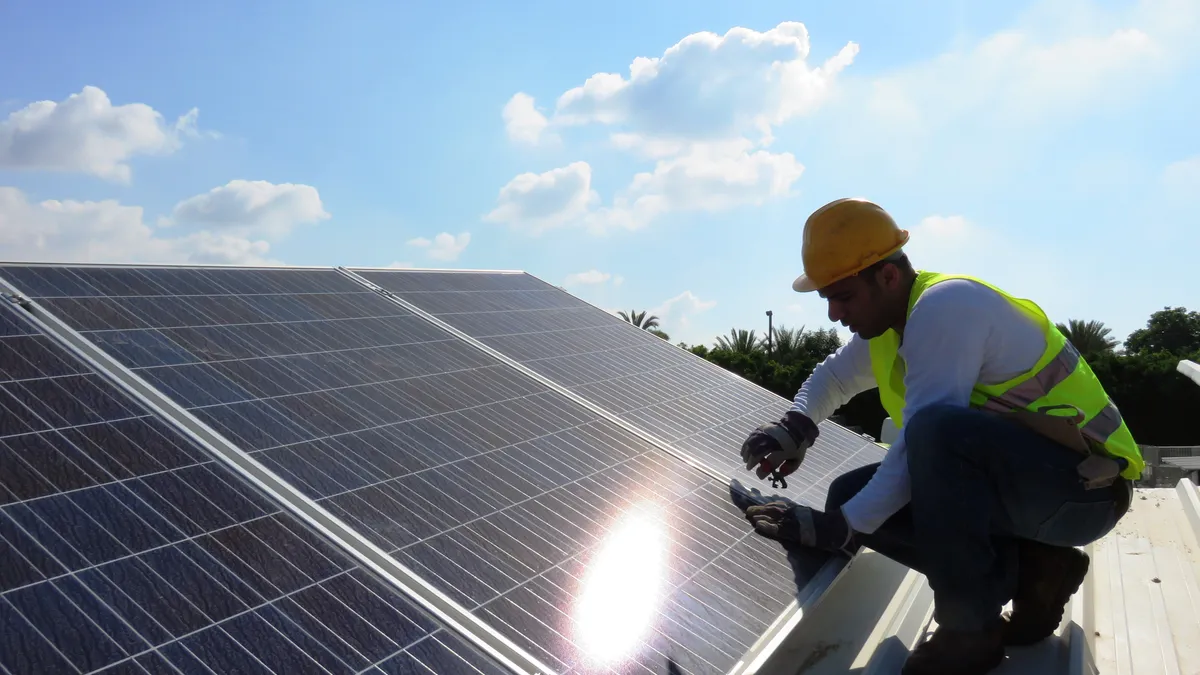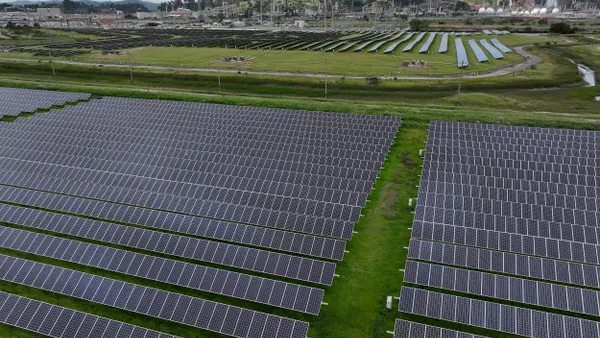Countless words have been spilled to describe the impacts and incentives for homeowners in the Inflation Reduction Act (IRA), especially as the legislation is set to spur a major wave of home electrification across the country.
The IRA’s success in achieving the electrification of America depends on the expansion of renewable energy like solar and battery storage. But what is not often discussed is the fact that success in this depends on the ability of clean energy companies, including solar installers, to effectively leverage the provisions of the law to grow their businesses and serve as wide an array of customers as possible.
For that to happen, solar installers need to understand and communicate the practical changes and benefits the IRA provides to their customers.
Here are the three most important IRA provisions installers must grasp:
Solar delivers long-term certainty
We live in a time of global uncertainty, particularly when it comes to energy. Global conflict, along with long-term fluctuations of energy supply and demand, translate into price volatility.
It’s not just at the gas pump, either. Electricity rates are also rising across the country, even doubling in some states. To keep costs down and bring some certainty back to their energy, more and more homeowners are looking to solar and battery storage as solutions.
But, solar installers still need to be able to clearly communicate to potential customers how much installing panels can reduce or eliminate the risk that comes from rising utility bills. After all, when a customer has enough solar to eliminate their utility bill, rising utility rates are no longer a concern.
Making this case to customers is easier thanks to the IRA. One of the law’s most important provisions is the 10-year extension of the 30% solar Investment Tax Credit (ITC). Before the passage of the IRA, the ITC was 26% and scheduled to drop down to 22% in 2023.
Sell the long-term savings
While this decrease in the value of the ITC was a selling point for installers, who could urge their potential customers to act quickly to grab the higher value ITC, solar installers now have the benefit of both a 30% ITC and the certainty that the incentive will be in place for a decade.
The passage of the IRA also helps alleviate net metering concerns, especially in California. “At a base level, the increase in the tax credit alone from 22% to 30% will help drive sales and offset uncertainty of the net energy metering 3.0 proposed decision in California,” says Bruce Chandler, regional sales manager in Panasonic’s solar and storage division. “It seems likely that the opportunities offered by the IRA will more than offset potential net energy metering 3.0 downsides and offer growth opportunities to most installers in 2023.”
Battery storage incentives make resilience financially viable
The impacts of severe weather on the grid were obvious long before Hurricane Fiona knocked out power and water across the island of Puerto Rico and Hurricane Ian devastated Florida. An Associated Press analysis of utility data submitted to the U.S. Department of Energy found that the number of severe weather-related outages has more than doubled since the early 2000s.
Not surprisingly, a big reason people living in areas vulnerable to severe weather and power outages consider purchasing storage is to keep electricity flowing when the grid goes down. In the past, the purchase of standalone storage systems was not incentivized with tax credits, though. “There haven’t been a lot of opportunities for standalone storage up until now,” Chandler says.
The IRA changes that by extending the same ITC that benefits solar customers to standalone storage. The incentive makes storage more financially attractive to customers interested only in having backup power and homeowners who have already installed solar and want to enhance their home’s resilience against power outages. “Most installers are now expecting to start seeing more demand from non-solar customers who may want to add standalone storage for resiliency or other reasons,” Chandler indicates.
Strong partnerships can help installers take advantage of the IRA
Long-term policy support has been critical to the massive growth of the U.S. solar market. The IRA extends and deepens that support. But, experienced installers also know that there are many other ingredients that contribute to their success — everything from hiring the right people to efficiently acquiring customers to utilizing the best design software.
One key ingredient not to overlook: the importance of working with reliable and knowledgeable equipment suppliers like Panasonic.
At the most basic level, partnering with Panasonic provides certainty around the long-term quality of solar panels and storage — both of which are backed by complete parts and labor warranties. The power of a trusted brand like Panasonic’s goes a long way to building trust and loyalty that can keep customers fully satisfied and inspire them to refer their friends and neighbors.
“We’re behind our installer network with a one-stop solution so you can get back to electrifying homes faster,” said Mukesh Sethi, Panasonic Group Manager of solar and storage systems. “More importantly, leverage your business with the support of a legacy brand you and your customers have known and trusted for over 100 years.”
Partnering with Panasonic also brings assurance that equipment will be eligible for the ITC. “Both Panasonic solar modules and energy storage systems qualify for the 30% tax credit under the IRA,” confirms Cody Melamed, another regional sales manager for Panasonic’s solar and storage division.
Installers have a huge opportunity with the incentives from the IRA. The right partner can help them make the most of that opportunity.
Learn more about how Panasonic can serve as a trusted partner to help you leverage the IRA and grow your business.










